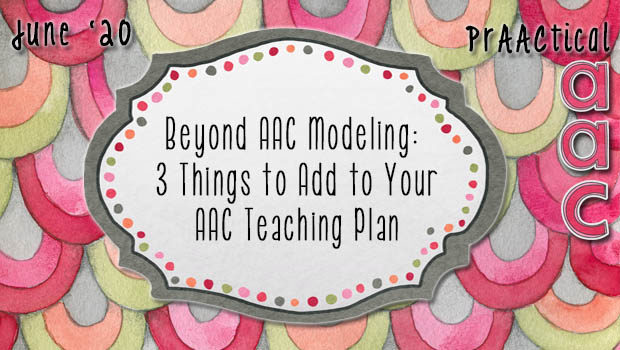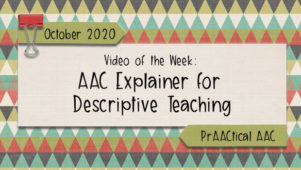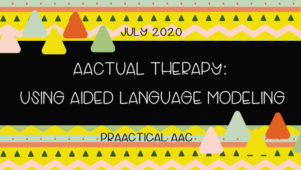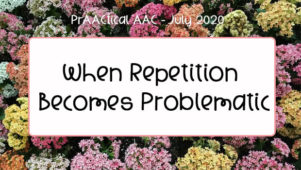Beyond AAC Modeling: 3 Things to Add to Your AAC Teaching Plan

It is hard to overstate the role of aided language input and other forms of AAC modeling when interacting with those who are still developing their language and communication skills. Seeing and hearing others use AAC is important for many reasons. Some AAC users pick up language and AAC skills just through that kind of exposure. Most, however, benefit from explicit instruction on specific skills, such as creating longer and more complex sentences, using morphological endings to change the form of the word, or expanding the range of words they use. They also need support to move from using these skills only during therapy/instruction to using them in a range of functional contexts. Here are some things to add to our intervention to strengthen their AAC learning.
- Think Aloud Strategy: Narrate the steps of finding what you want to say in their AAC system as you create your message (e..g., Quiet self-talk: “Let’s see… I want to tell Marisol what happened to my sister. Sister. I’m going to the People words. And here are my Family People…”). If your learners have morphology goals, explain what you are doing to change word forms so that they can see what you are doing to change verb tense, pluralize a noun, or apply a suffix (e.g., -ment, -ious). Talking through your process in a soft, unobtrusive way can give learners valuable insight into the ‘how’ of using their AAC systems with a focus on the specific things that they are struggling with.
- Variety of Partners: Many AAC learners have difficulty using what they are learning with other people and in other places. We can facilitate that generalization by switching up the communication partners for all or part of each session. This allows us to give the learner some experience of using their new AAC skills with other people while we are still around to provide coaching and support. Invite a family member, peer, or even a colleague to come into the session for a period of time and have a planned role for them. On a good day, Camilla’s brother comes in at the mid-point of her teletherapy session so that she can practice using her core words in a game. Through this, Camilla develops the experience of using her new skills with people other than her therapist. Her brother learns that Camilla can make sentences like “I want to go” and “That is not good” while playing this game. This sets an expectation for her to use those skills outside of therapy and gives him a model for how to support Camilla if she falters. Together, these support the functional use of the new skills in day-to-day life.
- Recap the Session: Save a little time at the end of the session to review what’s been done. This is a great time to work on narrative skills as you co-construct a story of how you spent the time together (e.g., “First, we talked. You told me about __. I told you about __. Then, we read a book. It was silly. After that, we took a picture and wrote a sentence about it. We texted that to Sarah…”). This gives important practice in building a personal narrative, which is important but elusive to many AAC learners. Adding a short review of the session to the end of agenda builds a routine that also gives practice in using target words and sentences and in specific word forms (e.g., past tense, plurals).
By adding these things to our instructional plan, we build fluency and support carryover to daily living. Do you have tips for accomplishing these goals? We’d love to hear about them.
Filed under: Featured Posts, PrAACtical Thinking
Tagged With: carryover, generalization, Language Experiences & Activities, Language facilitation strategies, loose training
This post was written by Carole Zangari




